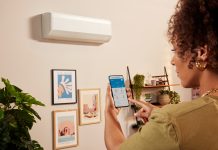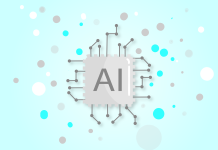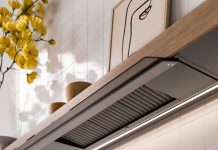The correct treatment of WEEE originates a mine of important economic value for the recovery of secondary raw materials and precious metals. The academic research world works at the issue, with the implementation of targeted projects.
The disassembly of Weee is one of the challenges we must win in next years. It appears as a course increasingly characterized by the European propensity for the circular economy, in the name of the motto “Use, reuse, recycle”. We are not referring only to the treatment and recycling of refrigerators, washing machines and computers, but also of photovoltaic panels, lamps and more in general LCD screens, batteries and accumulators. Once reached their lifecycle end, Weee can become a source of recovery of ferrous materials or glass but also, and especially, of metals of relevant economic value such as copper, lithium and rare earths. The University research works at the theme, with the development of targeted projects, also supported by the establishment of dedicated spin-off companies and partnerships between the academic world and entrepreneurial realities.
Born to disassemble
The Eco Recycling company, spin-off of Sapienza University in Rome, is specialized in the development of innovative processes for the recovery of metals from primary and secondary raw materials; the work in collaboration with the inter-university Centre HTR-High Tech Recycling, “head” at Sapienza University in Rome, has led to the development of targeted projects for the recycling of some Weee typologies. “In the last years, the legislation concerning the disposal of Waste electric and electronic equipment has become more and more severe – says Luigi Toro, university professor of “Theory of the development of chemical processes” at Sapienza University and president of Eco Recycling – The new rules are more restrictive and specific, and increasingly boost the development of purposely conceived processes providing, at the same time, the versatility for the recovery of second raw materials coming from this type of wastes. Some raw materials, like plastics and ferrous and non-ferrous metals contained in small and big appliances like computers, TV sets and printer monitors, fax, portable phones, washing machines, dishwashers, microwave ovens and so on (Weee classes R2, R3, R4) can be roughly recovered simply by means of mechanical treatments of disassembly, grinding and riddling. For a more drastic separation and a better exploitation of materials, like those contained for instance in photovoltaic panels or in the powders generated by worn-out cells, it is necessary to carry out specific chemical processes for the recovery and the reuse, with high efficiency making them feasible and competitive, and with an optimization of the energy consumptions and the chemical reagents used. Another priority target worth considering in this field is the development of recycling processes that lead to obtain high-quality technological products, which can be directly marketed and introduced into manufacturing cycles”. Today, how much is the world of sector companies – household appliances but not only – sensitive to these problems? “In the case of household appliances, starting from the production and sales phases of the product, players know clearly the disposal course and turn to the appointed consortia as reference partners. We still focus too often, however, on the coarse physical treatments of products at their life end, which do not allow an efficient and selective recovery of high added value components such as strategic precious metals”.

Specific process for cells and batteries
Not only household appliances. In the Weee field, the market is also entrusted, upstream, with the recycling and recovery of secondary raw materials from the systems that provide the power supply to household appliances. We are referring to photovoltaic panels, cells, accumulators and batteries. Today their collection, treatment and recycling strategies should be further implemented and optimized to satisfy a growing requirement. Eco Recycling is working at this. “In 2011 photovoltaic panels lived a use boom and their correct disposal is a need strongly felt, owing to the impressive rise of photovoltaic installations that in the next 15-20 years will generate an enormous quantity of wastes under the form of worn out photovoltaic panels – explains Toro -. In 2015 in Europe were expected 30,000 tons/yearly of panels to be disposed, with growth expectations, in 2035, up to 500,000 tons yearly. Precisely for this reason, the European Union has included the photovoltaic panels at their life end in the directive that promotes the development of innovative processes for the recovery of secondary raw materials (such as glass, plastics and metals) from Weee”. A solution comes from the project “Photolife”, a project co-founded by the EU and part of the programme LIFE+ 2013 (LIFE13 ENV/IT/001033) ended in August 2017, “aiming at the recovery of glass and of the other main valuable components derived from worn out photovoltaic panels with the construction of a pilot plant for the experimentation of an innovative process for the complete recovery of various types of photovoltaic panels of polycrystalline silicon, amorphous silicon, CdTe (cadmium telluride), CIS (indium copper (di) selenide) and CIGS (gallium indium copper (di) selenide)”.
Eco Recycling, as coordinator of the project, was responsible for the design and the implementation of the pilot plant, located in its industrial site at Civita Castellana in Viterbo province, aimed at the development of a process with low energy requirements, versatile and potentially applicable to all types of panels. The prototype provides for two treatment sections of the photovoltaic panel: the physical pre-treatment and the treatment with chemical reagents. The physical pre-treatment consists in an optimized trituration and riddling system for the treatment of photovoltaic panels that have glass as dominant component. The sieving allows the separation of fractions sent respectively to a treatment with chemical reagents for the detachment of the polymeric glass fraction and a chemical lixiviation treatment for the recovery of the metals contained in the cell of the lixiviation for the recovery of the metals contained in the cell of the panels, with the simultaneous cleaning of the remaining glass fraction.
The plant section for the treatment with specific chemical reagents has been designed, started and tested to treat various panel typologies, like for instance CdTe or Si (silicon) ones, and it has been installed inside a container to exploit its simple handling and to create a versatile and compact structure. The core of the system is the reactor, where it is performed the treatment of glass detachment from EVA (ethylene vinyl acetate) and the separation of the two components.
The other cornerstone of the research deployed with “Photolife” is the economic sustainability: the process, in fact, allows reusing the reagents used through the passage in apposite filters, minimizing consumptions and the environmental impact deriving from its operation. Still inside the same container is positioned a control area, housing the electric and pneumatic panel, the boiler for the heating of the treatment reactor and the connection to utilities. The tests of the first experimental campaign have provided good results in terms of transparency and granulometric distribution of the glass so obtained.
The developed process line, together with the implemented technology and the positive outcome of the first experimental campaigns on the prototype have motivated GA Energy Spa in Roma to carry out, in collaboration with Eco Recycling and the company Processi Innovativi of Maire Tecnimont Group, what will be the first industrial plant in Italy for the recovery of components with high added value from worn out photovoltaic modules.



New life for metals
Eco Recycling has also fulfilled two other projects concerning the treatment and the recycling of metal materials coming from electronic equipment as well as from cells and batteries. “HydroWEEE Demo”, acronym of “Innovative Hydrometallurgical Processes to recover Metals from WEEE including lamps and batteries – Demonstration”, co-funded by FP7 (Framework Programme 7), represents the successive step following the first project, “HydroWEEE”, developed from 2008 to 2012, with the Austrian company SAT in Wien as industrial leader and Eco Recycling as scientific leader. The main target of HydroWEEE was the recovery, through hydrometallurgical processes, of base and precious metals (copper, manganese, zinc, yttrium, indium, lithium, cobalt and rare earths with high purity), derived from Weee such as LCD monitors, cathode tubes and printed circuits but also worn out lamps and batteries, which has resulted in the implementation of a mobile pilot plant operating at Civita Castellana. In the ambit of the HydroWEEE Demo project, together with HTR, the company has built two demo plants on industrial scale, one fixed (at the company Relight in Rho) and one mobile (at the industrial site of Eco Recycling at Civita Castellana). The latter has been transported in various European Countries (Italy, Romania, Serbia), to test its performances and to demonstrate the feasibility of recycling processes with an extended point of view, which includes the technical ambit as well as the economic, operational, social and environmental one, with the aim of favouring its broad diffusion on the market. Still in collaboration with HTR, Eco Recycling is working at the recovery of metals from lithium ion rechargeable batteries (LIB), whose use in electronic equipment of daily use is exponentially growing. With a possible environmental risk in case of metal dispersion caused by inadequate collection, treatment and recycling processes. Previously, the NanoHydro project (developed in the ambit of a call from Lazio Region 2012-2014 in collaboration with the company Nova Systems Roma) has allowed defining pilot processes and plants for the production, through electrochemical techniques, of copper and cobalt metal materials starting from lyes generated by the hydrometallurgical treatment of special wastes like Weee and/or batteries. “Concerning this, the European Union has drawn up the guideline 66/2006, transposed in Italy with the Legislative Decree November 20th 2008, n. 188, “Implementation of the Directive 2006/66/CE concerning cells, accumulators and related wastes and abrogating the directive 91/157/CEE” – specifies Toro -, establishing a minimum collection for LIB corresponding to 25% within 2012 and 45% within 2016, besides a material recovery rate by 50%. It is then very interesting the study of innovative processes for the recovery and recycling of those components, which can be economically competitive while producing high added value nano-structured materials, directly reintroduced into the manufacturing cycle of batteries themselves or usable in other technological sectors”.









